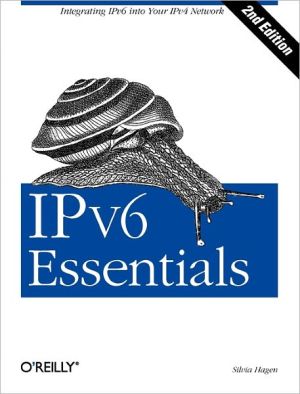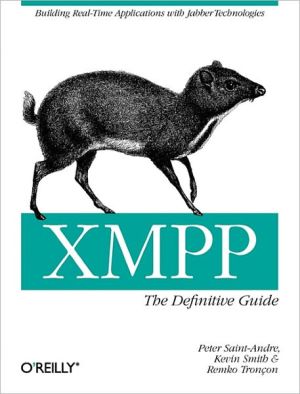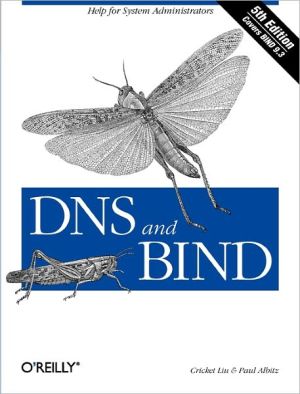IPv6 Essentials
IPv6, the next generation Internet Protocol, has been in the works since the early 90s when the rapid growth of the Internet threatened to exhaust existing IP addresses. Drawing on 20 years of operational experience with the existing protocol (IPv4), the new protocol offers scalability, increased security features, real-time traffic support, and auto-configuration -- so that even a novice user can connect a machine to the Internet. But what does this mean for IT professionals? Having learned...
Search in google:
Beginning with a short history of IPv6, the author provides an overview of the new functionality and describes live tests and production networks that are using the new protocol. Slashdot.org A well-written, clear, up-to-date guide to understanding IPv6 in-depth. This is a real accomplishment, because computer networking protocols are completely abstract, and translating all of these abstractions into understandable language is a noteworthy feat. The book explains how it all works to a very practical depth, so that the reader will be well-prepared to begin implementation.
Preface1. IPv6 Versus IPv4The History of IPv6Overview of FunctionalityTransition AspectsIPv6 Alive2. The Structure of the IPv6 ProtocolGeneral Header StructureThe Fields in the IPv6 HeaderExtension Headers3. IPv6 AddressingAddress TypesAddress NotationPrefix NotationFormat PrefixesAddress PrivacyAggregatable Global Unicast AddressAnycast AddressMulticast AddressRequired Addresses4. ICMPv6General Message FormatICMP Error MessagesICMP Informational MessagesProcessing RulesThe ICMPv6 Header in a Trace FileNeighbor DiscoveryAutoconfigurationPath MTU DiscoveryMulticast Group Management5. Security in IPv6Types of ThreatsBasic Security Requirements and TechniquesSecurity in the Current Internet EnvironmentCurrent SolutionsOpen Security Issues in the Current InternetThe IPSEC FrameworkIPv6 Security ElementsSecurity Association Negotiation and Key ManagementInterworking of IPv6 Security with Other ServicesOpen Issues in IPv6 Security6. Quality of Service in IPv6QoS ParadigmsQuality of Service in IPv6 ProtocolsQoS ArchitecturesMapping IP QoS to Underlying Transmission NetworksFurther Issues in IP QoS7. Networking AspectsLayer 2 Support for IPv6MulticastingMobile IPNetwork Designs8. Routing ProtocolsRIPngOSPF for IPv6 (OSPFv3)BGP Extensions for IPv6Other Routing Protocols for IPv69. Upper-Layer ProtocolsUDP/TCPDHCPDNSSLPFTPTelnetWeb Servers10. InteroperabilityDual-Stack TechniquesTunneling TechniquesNetwork Address and Protocol TranslationComparisonVendor Support11. Get Your Hands DirtySun SolarisLinuxMicrosoftApplicationsCisco RouterDescription of the TestsVendor SupportA. RFCsB. IPv6 ResourcesC. Recommended ReadingIndex
\ From Barnes & NobleThe Barnes & Noble Review\ IPv6 is coming of age, and you can begin leveraging its powerful benefits without putting your current IPv4 infrastructure at risk. Silvia Hagen’s IPv6 Essentials, Second Edition shows you how. \ Hagen’s book offers pathways for many kinds of readers: networking strategists; infrastructure managers; sysadmins and netadmins; even managers and entrepreneurs. (There’s much here for developers, too, albeit no code samples.) Hagen illuminates IPv6’s multiple advantages, from advanced routing and addressing to autoconfiguration and Quality of Service. But, for many readers, the best will come last.\ Here, she walks through transition mechanisms available to those who want to migrate from (or coexist with) IPv4 environments, including dual-stack operation, tunneling, and translation. She offers a taste of tomorrow’s leading-edge Mobile IPv6 services. Finally, she gives you hands-on experience with IPv6 tools from whatever platform(s) you favor: Linux, BSD, Windows Server 2003, Mac OS X, and/or Cisco. Bill Camarda, from the July 2006 Read Only\ \ \ \ \ \ Slashdot.orgA well-written, clear, up-to-date guide to understanding IPv6 in-depth. This is a real accomplishment, because computer networking protocols are completely abstract, and translating all of these abstractions into understandable language is a noteworthy feat. The book explains how it all works to a very practical depth, so that the reader will be well-prepared to begin implementation.\ \







